Clear guidelines and responsible practices are crucial for navigating the complexities of AI.
A recent report notes that about 85% of organizations plan to adopt AI technologies. Yet only half have built the governance frameworks necessary to support these initiatives.
This presents a challenge and an opportunity for those willing to lead in ethical AI deployment.
Effective AI governance zeroes in on two key areas: ethical use and regulatory compliance.
Ethical AI requires justice, accountability, and transparency. It must ensure that AI models do not perpetuate biases or harm individuals.
Compliance revolves around adhering to regulations like GDPR and CCPA. These are vital for maintaining public trust and legal protection.
Companies can use various free AI governance tools to strengthen their efforts.
Examples include TensorFlow Privacy to protect user data, AI Fairness 360 to evaluate model biases, and the What-If Tool for interactive analysis of AI decisions.
This toolkit allows organizations to manage ethical and regulatory demands with skill.
The pursuit of AI compliance and fairness necessitates engaging stakeholders.
Involving diverse groups can greatly inform governance strategies and provide valuable insights.
Moreover, organizations need a structured, ongoing method to monitor and assess the effectiveness of their AI governance frameworks.
By merging community engagement with powerful tools, businesses can foster transparency, earning the trust of consumers increasingly aware of AI’s implications.
The future of AI governance looks bright.
Many experts foresee significant advancements, such as automated compliance checks and clearer transparency in AI decision-making processes.
The blend of technology and ethics will become standard, with AI-powered analytics revealing ethical dilemmas before they grow into larger issues.
As we approach 2025, organizations that prioritize proactive governance will protect their operations and lay the groundwork for innovation and progress.
Also read: 6 beste gratis muziekproductiesoftware
Understanding AI Governance
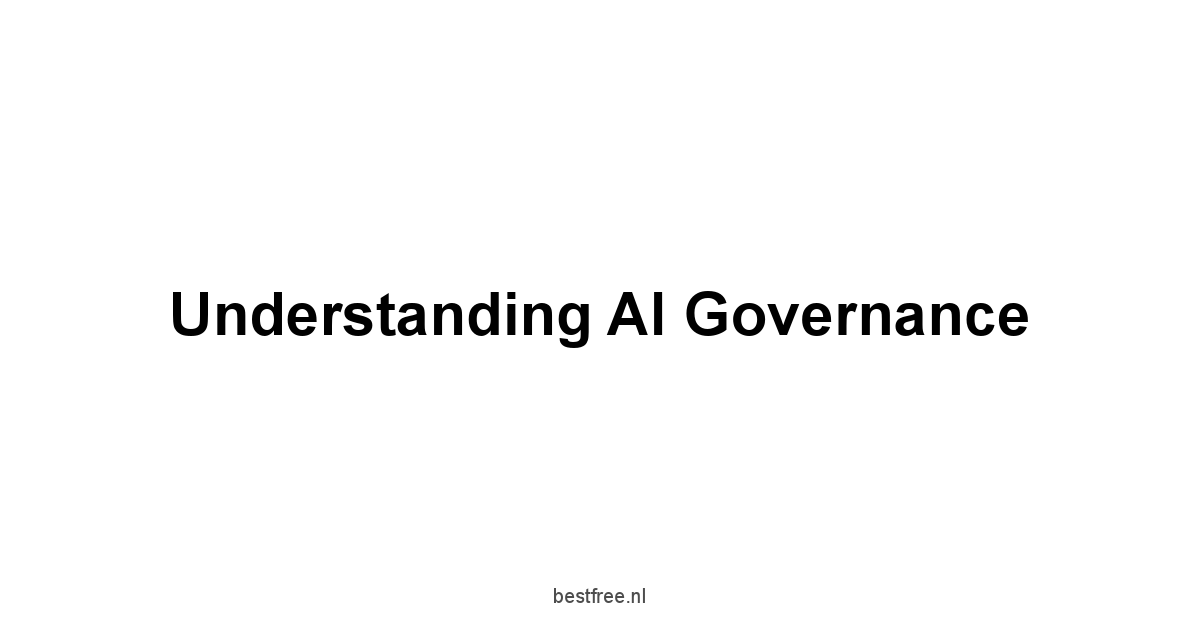
Technology is now woven into our lives. The need for clear guidelines is urgent.
AI governance means the rules and processes that manage AI’s growth and use with responsibility and openness.
In 2025, as reliance on AI deepens, the demand for governance will grow.
It guarantees ethical practices, manages risks, and ensures legal compliance. This leads to healthier organizations and communities.
AI governance confronts two core issues: ethics and legal rules.
Ethical AI demands fairness, accountability, and transparency.
Organizations must recognize bias in algorithms and take steps to avoid harm to individuals and groups.
Regulatory compliance demands adherence to laws on AI usage, like the GDPR in Europe or the CCPA in California. Proper governance not only shields organizations from legal troubles but nurtures public confidence in AI technologies.
The Importance of AI Governance in 2025
As we enter 2025, AI governance gains importance.
Organizations will lean on AI for innovation and efficiency, but it must be done with care.
Concerns have grown about AI’s ability to perpetuate biases and invade privacy.
The absence of governance has led to scandals and public outcry against those who misuse AI.
Strong governance can reduce these risks, aligning new technologies with societal values.
A recent study revealed that 85% of organizations plan to adopt AI by 2025, yet only 50% have strong governance to handle those technologies.
A clear gap in readiness remains.
Neglecting proper governance risks reputational harm and financial loss from fines and diminished competitiveness.
Thus, creating a solid AI governance plan is essential for safeguarding organizations and promoting sustainable AI practices.
Key Components of AI Governance
AI governance consists of vital elements that create a framework for managing AI systems.
These include:
-
Framework Policies: Set clear rules for AI development and usage. Policies must outline acceptable practices and ethical expectations.
-
Data Governance: Ensure the quality and integrity of data in AI systems. Data must be checked for accuracy, bias, and privacy compliance.
-
Algorithmic Transparency: Explain how AI models make decisions so stakeholders can understand and trust the outcomes.
-
Accountability: Assign clear responsibilities within organizations to ensure oversight and responsibility for the effects of AI systems.
-
Risk Management: Create procedures to find, evaluate, and reduce risks tied to AI use. Continuous monitoring for ethical and legal concerns is necessary.
-
Stakeholder Engagement: Include various stakeholders, especially consumers, in the dialogue on AI governance. Input from diverse groups makes governance fair and represents collective needs.
By assembling these elements wisely, organizations can forge an effective AI governance framework that meets the technology’s multifaceted challenges.
Regulatory Frameworks and Compliance
In October 2023, society saw shifts in the landscape of AI governance, marked by growing regulatory attention.
Many nations are drafting legislation aimed at AI technologies, stressing the need for compliance and ethics.
In the United States, the White House issued guidelines for safe AI development, calling for transparency and accountability.
In the same spirit, the EU’s proposed AI Act seeks to build a structured regulatory framework for high-risk AI systems.
Regulatory frameworks exist to protect users and nurture a transparent space for AI deployment.
Compliance not only saves organizations from liability but fosters innovation by boosting public trust in AI technologies.
Also read: 6 beste gratis muziekproductiesoftware
Top Free AI Governance Tools in 2025
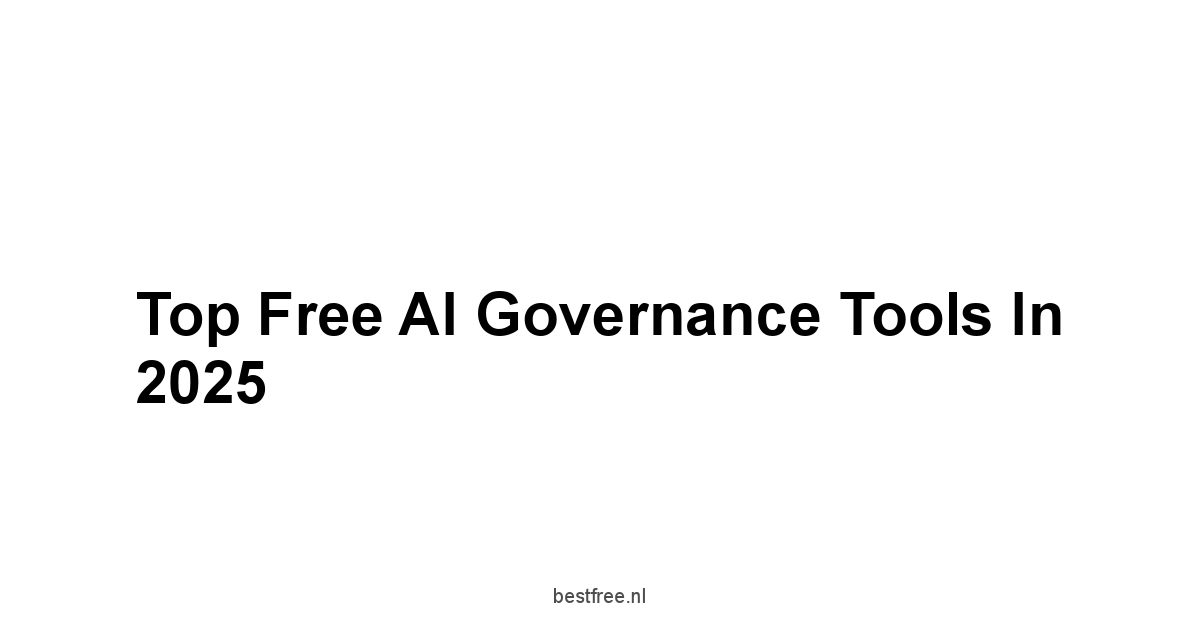
In 2025, businesses have free tools for AI governance. They meet compliance. They ensure ethical use. They maintain stakeholder trust.
Overview of Free Tools Available
Many free AI governance tools exist. Each serves a unique purpose. They support organizational needs.
Here’s a list of notable tools:
-
TensorFlow Privacy: An open-source library. It helps with privacy-preserving machine learning. Developers train models while protecting user data.
-
AI Fairness 360: This tool offers metrics for fairness and bias. It provides resources for evaluating datasets and models. It helps mitigate unwanted bias.
-
What-If Tool: A visualization tool with TensorFlow. Users analyze machine learning models. No programming skills required. It gives real-time insights on input impacts.
-
Jupyter Notebooks: Not exclusively an AI governance tool, but useful. It helps document AI workflows. Transparency in development and deployment is ensured.
-
Dataverse: An open-source data management tool. It ensures compliance with data governance. Data is accessible, with records for audits.
These tools help users meet various aspects of AI governance. They ensure fairness in algorithms. They manage data protection. They uphold compliance with regulations.
Features and Functionality of Each Tool
-
TensorFlow Privacy
- Key Features:
- Implements differential privacy techniques.
- Trains models with user privacy considered.
- Functionality:
- Users enforce privacy on datasets and measure levels.
- Key Features:
-
AI Fairness 360
- Provides comprehensive fairness metrics.
- Detects and mitigates bias.
- Tools for evaluating biased outcomes. Suggests strategies for resolution.
-
What-If Tool
- Interactive analysis without programming.
- Custom scenarios for model response testing.
- Visualizes predictions and explores configurations.
-
Jupyter Notebooks
- Supports live code and text.
- Collaboration features for users.
- Documents AI processes in an interactive format.
-
Dataverse
- Secure data storage and sharing features.
- Version control and metadata management.
- Promotes data integrity and compliance.
With these tools, organizations can develop effective AI governance frameworks.
Also read: 7 best free photo editors
Evaluating AI Governance Tools
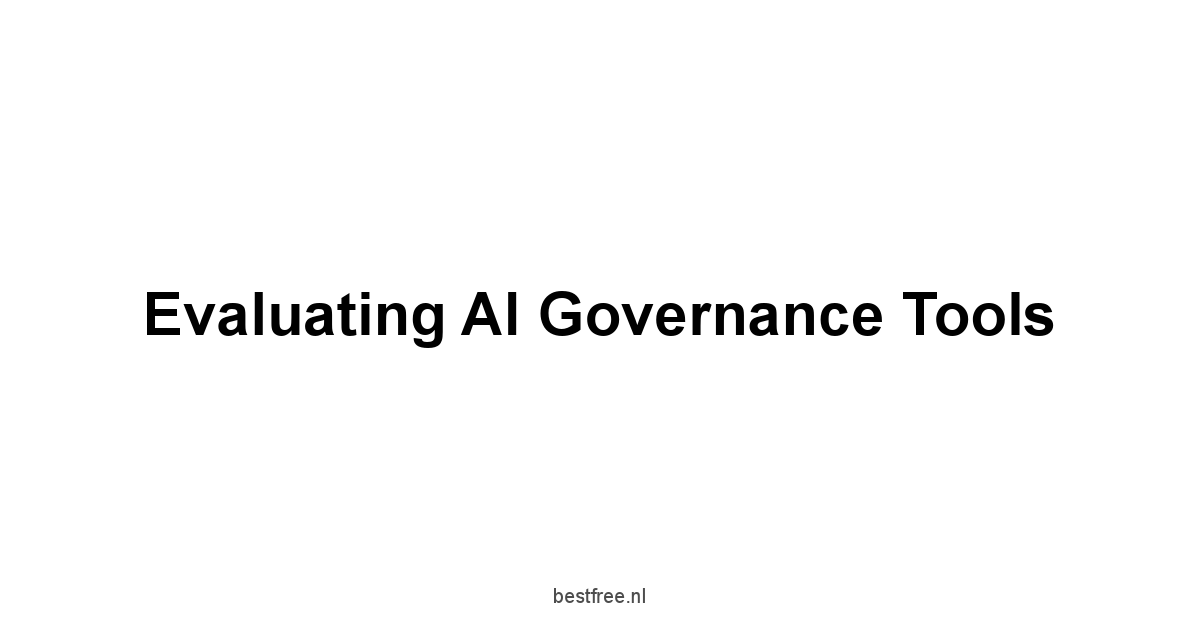
The market is flooded with AI governance tools. Organizations must set high standards to choose wisely.
Picking the right tools is vital. It shapes implementation and underpins success in governance.
Criteria for Selecting the Best Tools
In evaluating AI governance tools, organizations should assess these key points:
-
Functionality: The tools must meet distinct needs. Data protection, fairness, and compliance are essential. Robust tools must include features that simplify processes and reduce risks.
-
Ease of Integration: Tools should fit into existing systems without major changes. Compatibility leads to a smoother adjustment.
-
Scalability: Solutions must grow with the organization. They should handle increased data volume and complexity as time passes.
-
User-Centric Design: Tools should be easy to use. An intuitive interface helps users navigate features. A focus on user experience increases the chance of acceptance.
-
Support and Resources: Good user support and training are crucial. Organizations should seek tools that offer tutorials, documentation, and engaged user communities.
-
Cost Efficiency: While free tools are appealing, organizations must consider costs for upgrades or extra features.
By weighing these points, organizations can choose AI governance tools that enhance their frameworks.
Importance of User Feedback and Community Support
User feedback is vital in judging the effectiveness of AI governance tools.
Knowing how others have succeeded or failed with a tool offers critical insights.
Organizations should tap into online communities and forums to gather insights and resolve issues.
These communities are often rich with resources.
Taking part in discussions can reveal best practices, implementation tips, and fresh ideas users have innovated.
Moreover, strong support from developers builds confidence in a tool’s future and troubleshooting efforts.
Also read: how to stay productive and balanced
Implementing AI Governance Tools
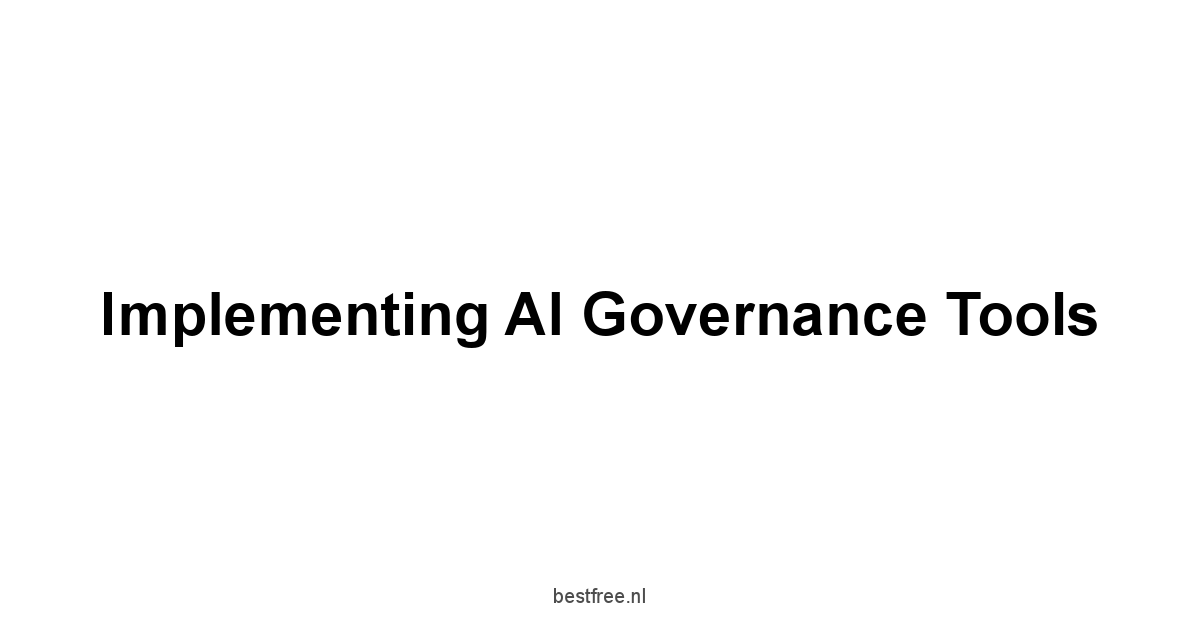
Adopting AI governance tools requires a clear strategy. It must fit into existing structures.
Organizations must consider technology but also embrace a shift in culture.
Steps to Integrate Tools into Existing Frameworks
-
Assessment of Current Frameworks: Start with a detailed look at current practices. Spot the gaps in governance. Define what success looks like for tool implementation.
-
Selection of Appropriate Tools: Choose the right tools based on evaluations. They must meet the identified needs. Align them with organizational goals.
-
Cross-Functional Collaboration: Engage all stakeholders in the process. Cooperation between departments fosters commitment and brings varied views on governance needs.
-
Pilot Testing: Test the selected tools in a limited setting. Gauge their effectiveness and user satisfaction with metrics and feedback before wider application.
-
Full Implementation: After successful pilot testing, deploy tools across the organization. Keep an eye on progress, looking for areas that need improvement.
Training and Onboarding for Effective Use
Training is essential. Users must know how to use the new tools well.
Organizations should focus on:
-
Comprehensive Training Programs: Create specific training sessions that cover key features and user needs. Mix hands-on practice with theory for better understanding.
-
Ongoing Support: Set up a system for continual help. Include FAQs, user forums, and support teams. This encourages questions and shared experiences.
-
User Feedback Mechanisms: Provide ways for users to share feedback. This helps refine both technology and support systems.
By focusing on thoughtful implementation and strong training, organizations can take on AI governance tools that bring real benefits to their AI efforts.
Also read: 7 beste gratis bestandcompressiesoftware
Challenges of AI Governance
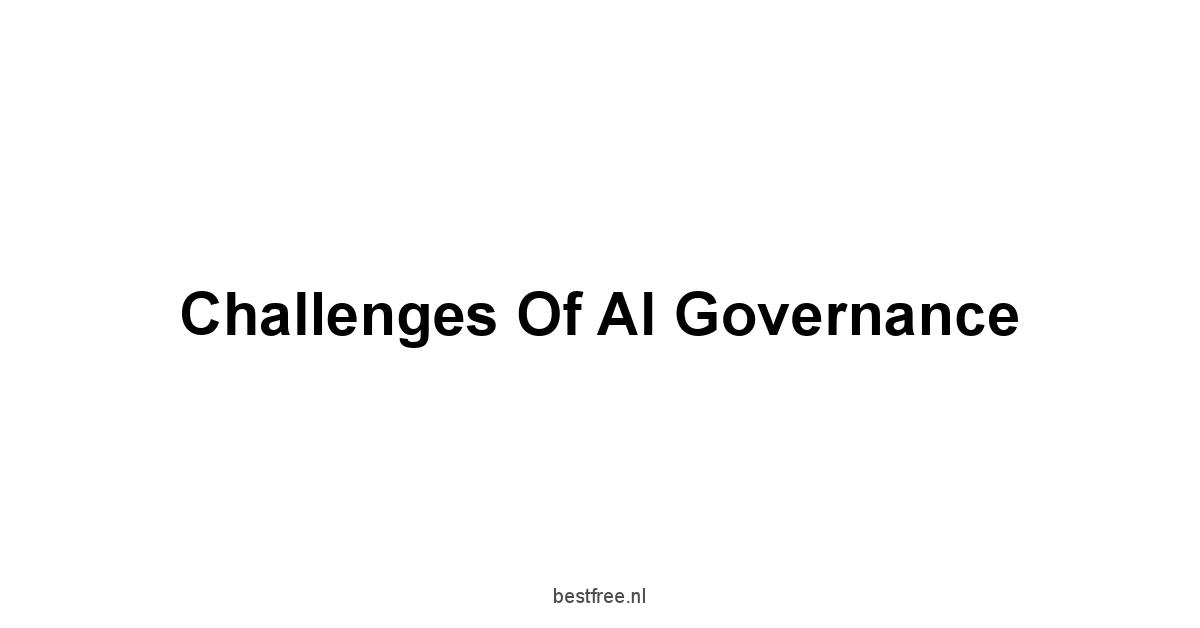
AI governance is important. But many challenges remain. Effective implementation is needed.
Organizations must face these obstacles to create good governance.
Common Obstacles in AI Tool Adoption
-
Resistance to Change: Employees resist new tools. They see them as disruptions to work.
-
Lack of Awareness: Many organizations do not understand the risks of AI. They fail to create solid governance frameworks.
-
Integration Difficulties: New tools may not fit with old processes. This leads to complications and extra work.
-
Regulatory Compliance: Regulations are complex. Organizations must spend time and effort to comply.
Strategies to Overcome Governance Challenges
To cope with AI governance challenges, organizations can adopt clear strategies:
-
Change Management Programs: Invest in change management. Prepare employees for transitions. Clear communication helps acceptance.
-
Awareness Campaigns: Offer educational resources on AI governance risks. Awareness leads to better decisions.
-
Technical Support: Provide strong technical support for tool integration. Good partnerships help resolve issues quickly.
-
Upskilling Initiatives: Train employees to fill skill gaps. Empower them to use tools confidently.
-
Regular Audits: Assess AI governance practices regularly. Find problems early to adjust in time.
By acting now, organizations can face challenges and ensure smooth adoption of AI governance tools.
Also read: 10 best free website builders
Future of AI Governance Tools
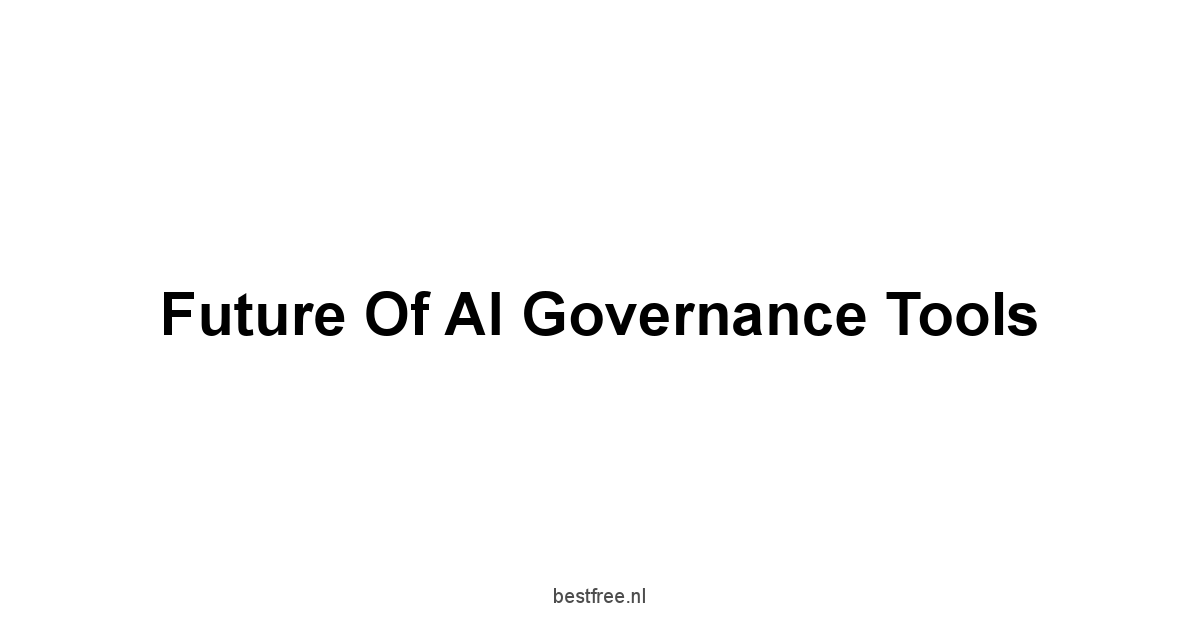
The field of AI governance changes. Technology advances. The need for governance grows.
Insights show what lies ahead for AI governance tools.
Predictions for Advancements in AI Governance
-
Increased Automation: Future AI governance tools will use machine learning to automate compliance checks and risk assessments.
-
Enhanced Interoperability: Organizations will adopt SaaS solutions. Governance tools will focus on seamless interoperability for efficient integration and data sharing.
-
Greater Transparency: New regulations will demand transparency in AI systems, pushing for tools that explain outcomes clearly.
-
Adaptive Learning: Future tools will use adaptive learning to improve by analyzing user interactions. Users will benefit from these continuous improvements.
-
Global Collaboration: Sharing best practices and frameworks will drive organizations to work together across borders, creating a standard approach to governance.
The Role of AI in Shaping Governance Practices
AI will redefine governance practices.
AI analytics will analyze vast datasets to uncover ethical issues, identify biases, and ensure compliance.
Additionally, AI will enhance stakeholder engagement by collecting feedback from communities, making organizations more responsive.
AI will also support decision-making, providing data-driven insights throughout the governance framework.
As organizations use these insights well, they will build responsibility and trust, leading to improved governance practices.
Also read: 6 beste gratis bestandsherstelsoftware
Community and Resources

Engaging with communities and using educational resources is necessary for organizations seeking to strengthen their AI governance frameworks.
These resources offer guidance, support, and best practices for successful implementation.
Forums and Online Communities for Support
Online platforms are important spaces for organizations and individuals to share ideas, concerns, and solutions related to AI governance.
Some forums include:
-
AI Governance Network: A community for those in AI policy, ethics, and governance to share insights and work together on issues.
-
AI Ethics Discussion Forums: Platforms to discuss ethical concerns about AI, where users engage in meaningful conversation and share resources.
-
Reddit Communities: Subreddits focused on AI governance, machine learning, and ethics, providing areas for discussion and resource sharing.
-
LinkedIn Groups: Networking groups for AI governance and ethical tech considerations, allowing professionals to connect and share knowledge.
These communities allow participants to learn from each other, access valuable resources, and face challenges together.
Educational Resources on AI Governance
Many educational resources help organizations stay informed about AI governance best practices.
Consider using:
-
Online Courses: Platforms like Coursera, Udemy, and edX offer courses on AI ethics, policy, and governance. These courses provide foundational knowledge and specialized skills for effective governance.
-
Webinars and Workshops: Attending webinars and workshops hosted by the industry offers chances to learn from experts and keep up with the latest in AI governance.
-
White Papers and Research Publications: Many research institutions publish white papers that detail best practices and theoretical advances in AI governance. These resources keep organizations current on trends and findings.
-
Professional Organizations: Joining groups like the Association for the Advancement of Artificial Intelligence AAAI or the Partnership on AI offers networking and access to industry resources.
By engaging in communities and using educational resources, organizations enhance their AI governance practices, ensuring effective regulations and ethical use of AI technologies for the future.
Also read: 5 best free browsers
What do we think?
We stand at the edge of a new time in artificial intelligence governance. It is essential for organizations to embrace frameworks that tackle ethical and regulatory challenges.
The need for governance is urgent.
Eighty-five percent of organizations plan to use AI technologies by 2025. Yet, only half have adequate governance structures. There lies a significant gap.
This gap reveals the dangers of using AI without proper oversight.
A solid governance framework protects against legal troubles and builds public trust. It clears the way for innovation in line with societal values.
The need for strong AI governance tools grows as organizations navigate compliance and ethical issues.
Tools like TensorFlow Privacy and AI Fairness 360 offer vital resources that enhance governance.
By promoting transparency, accountability, and risk management, these tools help create an environment where AI can flourish ethically.
Organizations that choose the right tools and embrace change are better prepared to use AI responsibly. They forge a path for sustainable and innovative practices ahead.
Besides frameworks and tools, we must not overlook community engagement.
By joining forums and online groups, organizations can access a treasure of knowledge and experience that enriches their governance plans.
Talking with peers, sharing best practices, and seeking feedback on governance problems can quicken the creation of better policies.
As we move forward, the future of AI governance holds promise, shaped by technological innovation and collaboration across industries.
Automation, transparency, and adaptive learning are some trends that will influence how organizations manage their AI efforts.
As AI becomes a tool for governance, its capabilities will enable organizations to make informed, data-driven choices concerning ethics and risk.
By embracing these changes, organizations will strengthen their governance frameworks. They will lay a foundation of trust and responsibility—keys to navigating the complexities of AI in the years to come.
Also read: 6 best free file recovery software
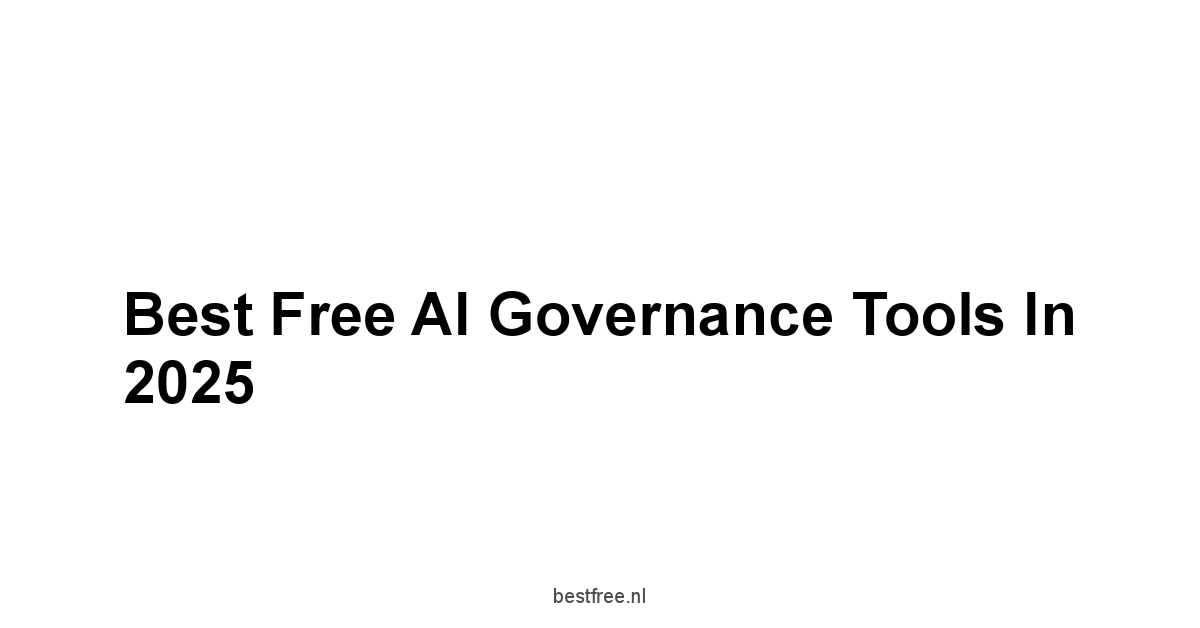




Leave a Reply